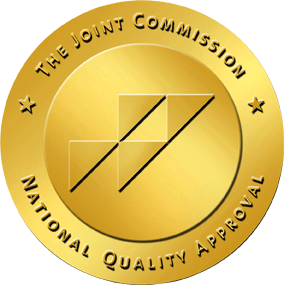Prescription Drug Rehab Center
Drugs that are meant to save lives can easily end up in the wrong hands. What can start as a valid prescription to treat anxiety or pain can turn into a serious addiction. If you are looking for help with n addiction, prescription drug rehab maybe the solution.
Prescription drug abuse is a serious health crisis in the United States. Roughly 14.3 million Americans aged 12 and older report misusing prescription psychotherapeutic drugs within the past 12 months.
Numbers from that same data set show that 3.7 million people have misused prescription stimulants, 4.9 million have misused prescription tranquilizers or sedatives, 3.9 million have misused prescription benzodiazepines, and 8.7 have misused prescription pain relievers.
Additionally, millions of Americans are abusing over-the-counter (OTC) medications in order to get OTC highs. The risk is especially high among those between 12 and 25 years old. In fact, long-term surveys show that around 38% of illicit drug use in teens and kids involves OTC drugs.
Here’s how many people are dying every year from overdoses involving some of the most commonly abused prescription medications:
- Opioids: 16,706
- Benzodiazepines: 12,499
- Antidepressants: 5,859
The Effect of Abusing Prescription Medication
When abused, many prescription medications can cause the same profound pain relief and euphoric effects as illicit drugs. They can also cause drug-seeking behaviors and dependency. While prescription drugs are considered safe, even people who take them for medical purposes under the care of a prescribing physician must be carefully monitored.
Abusing prescription drugs can change how the brain works. It can also lead to addiction, overdose, and death. Many of the same risk factors that apply to people who take illegal drugs are in play for prescription drug abuse. This can include trauma, family history of addiction, peer pressure, and early use. Factors that increase risks for prescription drug abuse specifically include being female, having poor-to-fair health status, and daily drinking.
Which Prescription Drugs Are Mostly Likely to Be Abused?
Hundreds of prescription and OTC medications have a high potential for abuse. This ranges from everything from ketamine to laxatives. Here’s a look at the most commonly abused prescription drugs under generic and brand names.
Depressants
Depressants slow down messaging between the brain and body. Due to their ability to reduce arousal and stimulation, some depressants can induce a euphoric state when abused. With data showing that misuse accounts for 17.2% of benzodiazepine use overall, an increasing number of people are being affected by Ativan (lorazepam) misuse and addiction. The full scope of depressant drugs being abused includes:
- Barbiturates (Amytal, Nembutal, Seconal, Phenobarbital)
- Benzodiazepines (Ativan, Halcion, Librium, Valium, Xanax, Klonopin)
- Sleep Medications (Ambien/zolpidem), Sonata/zaleplon, Lunesta/eszopiclone)
Opioids and Morphine Derivatives
The opioid class of drugs blocks pain messages from the brain. When abused, they can boost feelings of pleasure and induce euphoria. They include:
- Codeine (Empirin with codeine, Fiorinal with codeine,
- Robitussin A-C (Tylenol with codeine)
- Morphine (Roxanol, Duramorph)
- Methadone (Methadose, Dolophine)
- Fentanyl (Actiq, Duragesic, Sublimaze)
- Oxycodone HCL
- Hydrocodone
- Bitartrate
- Hydromorphone
- Oxymorphone
- Meperidine
- Propoxyphene
Stimulants
Stimulants are commonly prescribed for people with attention-deficit/hyperactivity disorder (ADHD) and other impairments that inhibit focus. When abused, stimulants can produce feelings of intense focus, alertness, and productivity. Many people seek out stimulants to help them stay up for long periods. These drugs include:
Muscle Relaxers
Muscle relaxants are prescription medications that are used in the treatment of muscle pain, stiffness, and spasms. They are also commonly prescribed to treat chronic back pain. Muscle relaxers generally work by blocking pain signals in the nerves.
Due to risks for muscle relaxer addiction, these medications are typically only meant to be prescribed for relief of acute pain on a short-term basis. Commonly prescribed muscle relaxants include:
- Carisoprodol (Soma, Vanadom)
- Cyclobenzaprine (Fexmid, Flexeril)
- Metaxalone (Metaxall, Skelaxin)
- Methocarbamol (Robaxin)
- Orphenadrine (Norflex)
Miscellaneous
Miscellaneous prescription and OTC medications that are used to alleviate common symptoms ranging from motion sickness and congestion to headaches and constipation can be abused. Kids are especially susceptible to OTC drug abuse because items can be purchased without age restrictions, found online, or stolen quite easily. Commonly abused miscellaneous drugs include:
- Dextromethorphan (DXM)
- Caffeine pills
- Motion-sickness medication
- Laxatives
- Diet pills
- Pseudoephedrine/nasal decongestant
Spotlight on Adderall Abuse: Is Adderall Addictive?
Yes, Adderall is an addictive stimulant that can mirror the effects of meth and other illicit drugs when abused. Adderall abuse has been on the rise for at least two decades. This is a problem that many parents feel they can’t control because most young adults who have abused Adderall admit to getting it from friends.
Adderall is the brand name for a drug called dextroamphetamine-amphetamine that is commonly prescribed for ADHD and narcolepsy. Adderall addiction treatment can play a crucial role in helping those struggling with Adderall abuse to avoid potential side effects that include increased risk for depression, bipolar disorder, aggression, and hostile behavior. Stroke and high blood pressure are also risks. Adderall signs of abuse include:
- Decreased appetite
- Mood swings, irritability, and nervousness
- Headaches
- Rapid heart rate
- Sleep issues
- Persistent sweating
- Hyperactivity and restlessness
- Tremors
- Flushed skin
- Stomach pain and vomiting
Many people who abuse Adderall are unaware of the danger of combining Adderall and alcohol. As a stimulant, Adderall can mask the effects of alcohol. The decrease in alcohol’s intoxicating effect can result in overdrinking, which can result in overdose or death.
How long does Adderall stay in your system?
Adderall remains detectable for two to five days following ingestion. A person who has become physically dependent on Adderall will enter withdrawal anywhere from a few hours to a day after reducing or stopping use.
Adderall Withdrawal: What Is Detox Like?
Adderall is an addictive Schedule II controlled substance that is known to cause somewhat intense withdrawal symptoms. Symptoms of Adderall withdrawal following misuse can include depression, irritability, and other mood changes. Fatigue is also common. Some people may experience nausea, stomach cramping, and vomiting.
Withdrawal symptoms can last anywhere from a day to several weeks. For someone trying to break free of Adderall abuse, a medical detox program can provide a safer option with a lower rate of relapse compared to slowly tapering off of the drug or stopping “cold turkey” without support.
Is Tramadol Addictive?
Tramadol is an opioid analgesic designed to offer short-term treatment for pain. Tramadol has the potential to be a habit-forming substance with prolonged use. A person is at risk for tramadol dependence when either taking more than a doctor prescribed or taking the medication in a way other than the prescribed protocol.
Treatment for Prescription Medicine Abuse
The fact that doctors prescribe a drug doesn’t make it any less dangerous. Rehabilitation treatment is available for managing:
- Ketamine addiction
- Klonopin addiction
- Ambien withdrawal
- Hydrocodone detox and withdrawal symptoms
- Gabapentin (Neurontin) withdrawal and detox
- Xanax detox
- And so much more
In many cases, getting clean from prescription drugs requires a supervised medical detox. This experience places you in the care of professionals specializing in prescription drug addictions. In addition to providing a gentler, well-managed detox, this option can also ensure that you’re in the right hands if your withdrawal symptoms escalate.
Once detox is complete, clients move forward in recovery. This involves intensive therapies that help clients to understand the underpinnings of their addictive behaviors. A tailored plan may include:
- Individualized therapy
- Group therapy
- Family therapy
- Holistic therapy
- Ongoing medication-assisted treatment (MAT)
- Outpatient support
Vogue Recovery Center is a leader in prescription drug addiction treatment. Our clients enjoy top-notch recovery support in a welcoming, home-like environment. Your support system is waiting! Contact Vogue Recovery Center today.

References
- https://publichealth.jhu.edu/2016/adderall-misuse-rising-among-young-adults
- https://shcs.ucdavis.edu/sites/g/files/dgvnsk7846/files/inline-files/Mixing-infographic_Final.pdf
- https://doi.org/10.1176/appi.ps.201800321
- https://www.mayoclinic.org/drugs-supplements/tramadol-oral-route/side-effects/drg-20068050?p=1
- https://my.clevelandclinic.org/health/treatments/24686-muscle-relaxers
- https://nida.nih.gov/sites/default/files/rx_drugs_placemat_508c_10052011.pdf
- https://doi.org/10.2105/ajph.94.2.266
- https://nida.nih.gov/publications/research-reports/misuse-prescription-drugs/what-scope-prescription-drug-misuse



